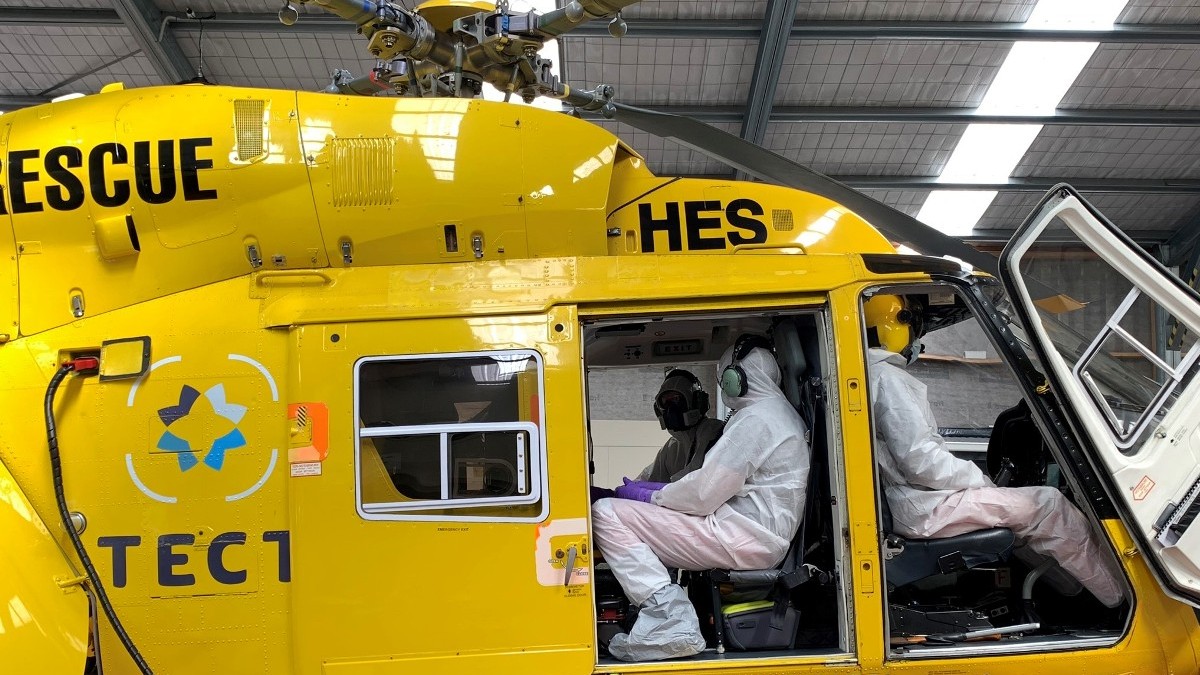Rescue Helicopter news
The commitment of an essential worker during a pandemic is even more crucial when your essential role is flying for New Zealand’s largest rescue helicopter operation.
Flying and working for an emergency air rescue service is by nature a demanding role. Retrieving patients from difficult or remote locations, administering treatment mid-air in a moving and compact space has its challenges. If your office is a rescue helicopter, working from home is not an option.
Philips Search & Rescue Trust (PSRT) is the charity that fundraises and markets for the Waikato Westpac Rescue Helicopter, TECT Rescue Helicopter, Greenlea Rescue Helicopter and Palmerston North Rescue Helicopter. Continuing to save lives relies heavily on community funding and skilled personnel to man their fleet of five BK117.
As with all healthcare workers in today’s climate, caring for trauma patients and the intimacy it requires, means the risk of COVID-19 exposure is significant. If your essential service is saving lives from the skies, contamination could result in losing scarce members of the crew, grounding the rescue helicopter indefinitely.
Driven to keep their crew and families safe, the Waikato Westpac Rescue Helicopter, TECT Rescue Helicopter, Greenlea Rescue Helicopter and Palmerston North Rescue Helicopter chose to go beyond the government’s standard precautions for health workers and introduced further measures on their own, to reduce transmission points and contain spread.
The compact environment of a rescue helicopter brings unique challenges, the new threat of COVID-19 adds yet another layer of complexity. In a confined space, the need to create physical distance, separate crew members and limit contact with critically ill or injured patients is complicated.
The initiative, the introduction of a barrier flight curtain, sealing off the front cabin from the rear cabin, is a serious protection measure which at $3,000 per helicopter cost PSRT considerable investment at $15,000 across the network. Without government support to fund these protection measures, the reliance on donations from the communities each rescue helicopter serves has increased significantly.
Aside from robust welfare and hygiene measures on base, initiatives include full body personal protective equipment able to withstand conditions within and outside the helicopter. Procedures involve methodical donning and doffing conducted under safety officer supervision. Post each mission, the aircraft and all equipment are meticulously decontaminated. Before the next shift bubble starts, the hangar is fully decontaminated ready for the arrival of fellow crew members.
In the event a pilot, intensive care paramedic or crewman is compromised, provision has been made for limited relief staff. Isolation accommodation has been secured offsite to ensure any affected staff can isolate immediately. Exposure on shift means crew must leave their families and home bubble for at least 14 days until cleared. A sacrifice the new measures are intended to avoid.
Senior Intensive Care Paramedic, Graeme Harvey shares insight, “This is unchartered territory for everyone, we’re staying agile, reviewing and evolving our processes as knowledge unfolds and international standards develop. We’ve had to adapt the way we work together as a team, being apart and staying protected is now how we keep each other safe; this is our ‘new normal’.”
As essential workers, crew members not only leave their family bubbles, they risk exposure with each patient collected. Although the COVID-19 specific equipment and procedures require substantial sacrifice, investment and time, the welfare of crew and safe return to their home bubbles each day is PSRT’s priority.
